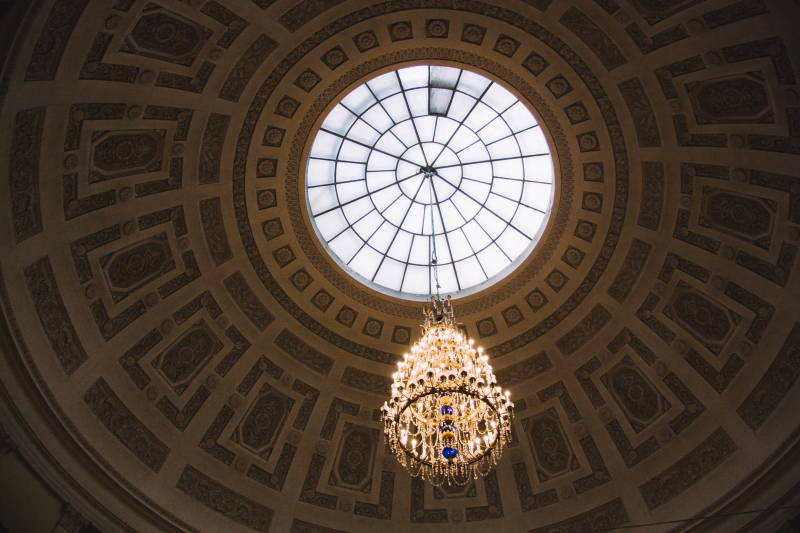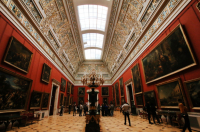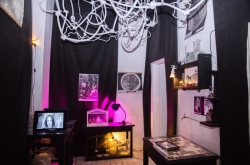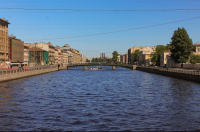When I first heard about the exhibition “Artificial Intelligence and Intercultural Dialog” at the Hermitage’s General Staff Building, I was having a hard time reconciling the classical, monumental museum with the groundbreaking, provocative concept of art through AI.
It was all the more reason to join ITMO’s International Council on their visit to the General Staff Building, a recently renovated space that now houses modern art and a permanent collection of impressionists, including Matisse and Picasso. It’s all glass, stone and lots of natural light - a world away from gilded halls just across the Palace Square.
A true representation of art and technology transcending borders, the exhibition features the work of 14 artists from 12 countries exploring how AI can create and transform art, as well as shape our perception of it. It is curated by Dimitri Ozerkov, who combines his duties as Director of the Contemporary Art Department at the Hermitage with serving as Head of ITMO University’s innovative Art & Science Program.
Sun Xun: Time Spy from White Rabbit Collection on Vimeo.
My perception started to shift quite literally while watching Time Spy video installation by a Chinese artist Sun Xun in 3D glasses. He trained AI to create an animated film by using a variety of prints with traditional images. As I watched them come alive, I couldn’t help but think, how do you even begin to process something so new by using traditional reference points?
At the Summer Gardens installation by Italian artist Davide Quayola, my need to analyze shifted to pure delight as I watched Claude Monet’s work being reduced to fractals and then reconstructed back to the flowers that inspired them. The explanation panel said that in the 19th century the invention of tube paints allowed artists to capture spontaneity of nature. Now modern technologies allow not only to capture the spontaneity, but also to generate it in front of the audience. It was exactly what I was witnessing.
We are exploring new narratives inside our latest hybrid GAN model with an experimental browser. Perspectives, interior, exterior, facades and public spaces... So fresh findings all around spatial memories. pic.twitter.com/3pnZyAUvy6
— Refik Anadol (@refikanadol) April 10, 2019
In the Recollections of Hidden Spaces II exhibit by Refik Anadol, new forms of architecture were being created in real time by a generative-adversarial network algorithm processing thousands of photographs of Gothic and modern architecture.
Language was coming alive thanks to Lulwa Al-Homoud, who used the Arabic alphabet as a basis to create the abstract graphical form that “aspires to become a universal means of communication”.
All around, human culture and concepts were being transformed by AI, turning them into new forms and experiences, moving humans in new ways. Maybe it wasn’t about the thought process. Maybe it was about the feeling. So does it make AI more human?
The exhibition runs through July 7, 2019. The expositions at the General Staff Building are open year round.




